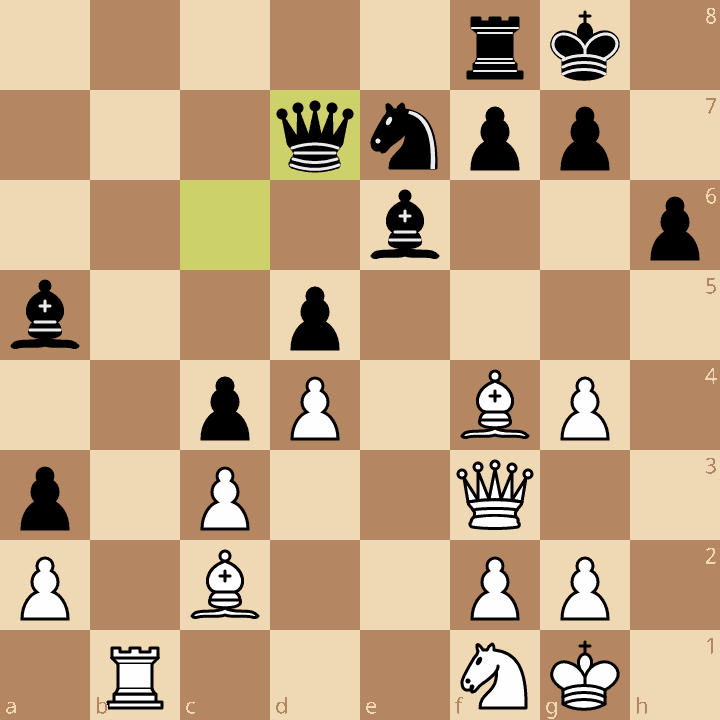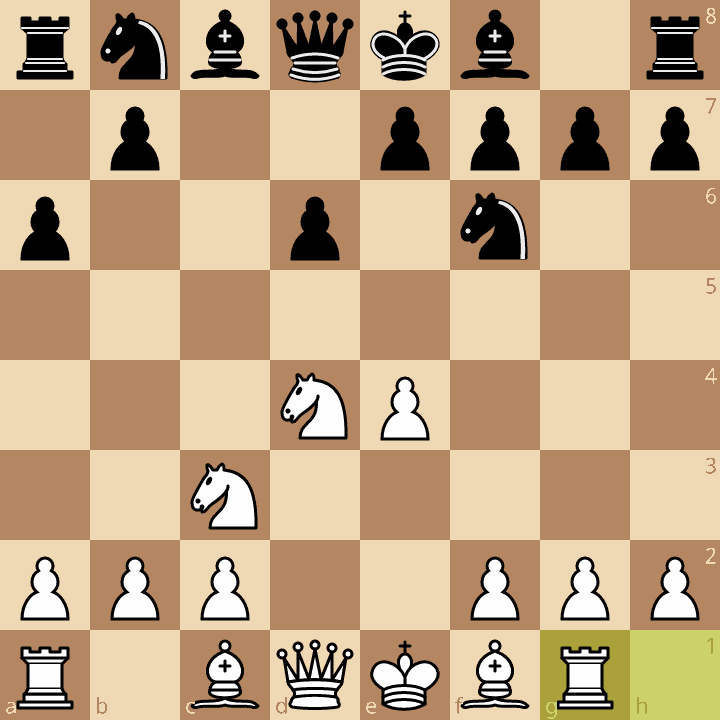FIDE Candidates 2024 Round 10
The Americans step up.
The Indians and Nepo suffered no pains today, as both the match between Pragg and Vidit and between Nepo and Gukesh ended by move 40. Both of these were Ruy Lopez games, but Gukesh did choose a particularly rare line:
1.e4 e5 2.Nf3 Nc6 3.a6 4.Ba4 Nge7!?
Technically this is a Cozio Defense, but I think playing 3…a6 and reserving Nge7 for the next move may be somewhat of a slight improvement for Black. In the end, though Gukesh was under a bit of pressure and appeared to have left his prep on the eighth move, the game ended just as the players reached the time control by a draw, with three pawns a piece on the kingside and a rook, and as we all know, “all rook endgames are drawn.”
The Americans fared well, however.
Hikaru Nakamura - Nijat Abasov
This was another Petrov Defense that transposed to an Exchange French. Abasov sprung for an interesting and slightly risky plan.
1.e4 e5 2.Nf3 Nf6 3.Nxe5 d6 4.Nf3 Nxe4 5.d3 Nf6 6.d4 d5 7.Bd3
Black has a number of options in here, and White’s typical lead in super-symmetrical positions like this is indeed rather small. Abasov was the first to create tension and introduce the opportunity for asymmetry in the position with 7…c5.
Naka responded 8.c3, but then came Abasov’s 8…c4!?
Moves like this in analogous positions are usually held in a bit of suspicion, because it’s not clear that it serves the player making it to release the tension in the center and invite an enemy piece to a good square. However, it seems very reasonable to play this here, and the c2 square is taken away from the enemy queen.
9.Bc2 Bd6 10.O-O O-O 11.h3 Nc6 12.Bg5 h6
So far, everything looks reasonable for both sides. The pawn structure seems to favor White in the middlegame however, because his pawns point towards a very clear target: the Black King. Nakamura retreated his bishop.
13.Bh4 b5!?
This move looks awfully slow — White can think of launching an attack rather swiftly. But Abasov’s play has a point. Since the situation in the center is stable, and White’s pieces need time to arrange themselves into attacking position, he can set up some trumps on the queenside for later. The middlegame may belong to White, but this queenside push sets up chances in the endgame. Play continues:
14.Re1 a5 15.Ne5 Ra6 16.Nd2 Bc7 17.Qf3 Ne7
Abasov just spent a lot of time arranging this move: Ra6 means that a trade on f6 doesn’t lead to a terminally weak king as the rook can recapture. Bc7 cleared the sixth rank for the rook. White has made some progress to improving his position, but it doesn’t seem like he was able to exploit all the queenside maneuvers with his play.
Naka introduces tension into the position:
18.b3 a4! 19.bxa4 bxa4 20.Nf1 a3!
And there it is. Black has a humongous space advantage on the queenside, and probably has a better endgame because the a2 pawn will require massive amounts of surveillance by the White pieces. The question is whether Abasov can get there alive. I really found his concept here interesting. For a long time it looked like Nakamura was better with pressure on the Kingside, and had even managed to infiltrate on the queenside through the use of the b-file:
However, some imprecise moves lead to equality. 26…Nc8 27.Bf4 Qc6 28.Rb8 Ne7 29.Rb1 29.Qd7
And then Nakamura had to deal with the threat against the g-pawn.
30.g5 Bg4 31.Qh3 h5! 32.Qe3 Ng6 33.Bh2 Re8 34.Qd2 Re2 35.Rb8+ Kh7 36.Qc1
Suddenly, Abasov’s position doesn’t just look solid — it looks the best it’s been all game. The g5-pawn is an easy target. White’s pieces, except for the errant rook on b8, are on the bottom two rows of the board. Meanwhile, Abasov’s pieces all have an important role to play. The rook on e2 constantly threatens the a2-pawn if White’s bishop ever moves. The bishop on g4 covers the rook. The g6-knight controls f4, making it hard to cover the g5-pawn. The knight on f1 is doesn’t have active prospects and requires multiple moves to improve. The h2-bishop strikes at nothing. The Queen on c1 is busy watching the g5 pawn, but it does have a more active position now that it is eyeing black’s pawn on a3. A move like h4 makes a bit of sense, aiming to create weaknesses on the kingside. I also think that Bd8 (attacking the g5 pawn) makes sense. Stockfish likes Bc7, where trading the bishops earns a tempo before moving the queen to the e-file and Re1, followed by Qe2, becomes a huge threat.
Abasov faltered: 36…Qe7? and all of Naka’s issues were solved with the move 37.Be5!
Naka later went on to win a nice endgame, as after many piece trades were forced, the a3 pawn had no defenders, and the a-pawn was able to march itself up the board and force Abasov’s resignation. A nice comeback for Nakamura, but a pity for Abasov, who had played a great game and had come pretty close to a winning position against a strong opponent.
Fabiano Caruana - Alireza Firouzja
Fabi cooked something special for Alireza:
1.e4 c5 2.Nf3 d6 3.d4 cxd4 4.Nxd4 Nf6 5.Nc3 a6 (the Najdorf) 6.Rg1!? (the Freak Attack)
Incredibly Alireza appeared to be out of book and spent nearly 14 minutes coming up with a reply. White’s plan here is rather blunt and caveman-esque: g4-h4(and/or f4?)-g5 with the constant threat of a kingside attack. Alireza responded with the prophylactic h5 to stop this idea, and then the players were off to the races. Things were looking like Black had almost equalized a bit later:
Alireza temporarily sacrificed a queen on g5 by capturing a bishop, and so Fabiano’s queen stepped into a pin to take it, only to be met with Bh6. Fabi then defended with h4. The material here is for all intents and purposes equal since White’s queen is doomed. Black can take on g5 and the game would continue. But Alireza caused problems for himself with 13…Be6?
Fabi thought for a long time and played 14.Be2, but 14.Bxe6! was by far the better move, so long as he could see that after 14…fxe6 White has 15.e5! dxe5 16.Qxh6 Rxh6 17.Nc5!
The point is that the “Irish pawns” on the e-file are incredibly weak. This would be a really pleasant endgame for White, and a nightmare to defend for Alireza. However, Fabiano would get more chances later, thanks to time pressure as both players were rushing to reach the time control.
32…Rh5?
Both players are under 3 minutes at this point, and must make 8 moves to get their extra thirty minutes. That makes the next coming moves important and particularly fateful, as a bad position on low time is impossible defend once your opponent is no longer in time trouble.
33.Bf1? (33.Rd8!, threatening Rg8+ when the g-pawn is protected in a superior way —Black must reply with Kh7, otherwise White will play Bc4 and Re7+ with a mating attack incoming) Rxd6+ 34.cxd6 Rh8 35.Re6+ Kf7 36.Bc4 (threatening all sorts of nasty discoveries) Rd8? 37.Ke1! (just avoiding any pins of the pawn) Kg7 38.Kf2 a5 39.a3 b5 40.Bd3 Bd5?!
Alireza made this move when he had six seconds left on the clock — he barely reached time control, but here Black’s position is miserably hopeless. The d-pawn cannot be stopped by the bishop, so the king must put in work to stop a promotion; but the rook cuts the king off from the defense of the pawn. The bishops are of the same color, and White will win either the f-pawn or the b-pawn, either of which represent a wrong-color Bishop endgame. White is absolutely winning.
41.Re7+ Bf7 42.Bxb5 Kf6
43.Rc7! (preparing to trade the rooks) Rxd6 44.Rc6 Rxc6 45.Bxc6 Bb3 46.Bd7 Kg6 47.Kg1 1-0
White will win the h-pawn, and Black will lose another due to zugzwang.
Gukesh and Nepo survived their battle, and both Fabi and Naka are half a point from the leaders. Incredible!



















